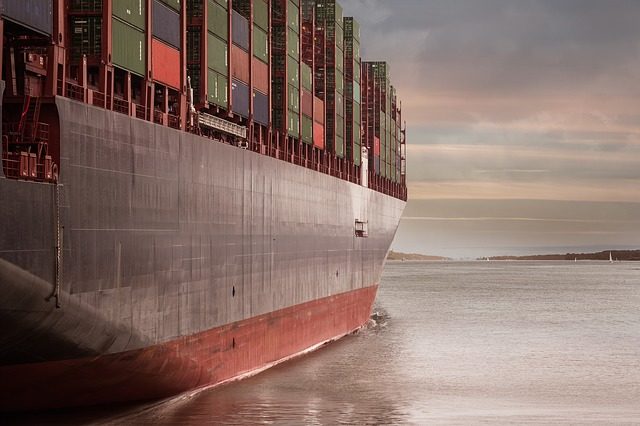
The Philippine Bureau of Customs (BOC) has released procedures for the issuance and processing of the pre-lodgment control order (PLCO) and alert order (AO) pursuant to the Customs Modernization and Tariff Act (CMTA).
Customs Administrative Order (CAO) No. 07-2019 covers all importations, whether for consumption, warehousing, or admission to Free Zones, as defined in Section 102 (w) of the CMTA, whether dutiable, taxable, or otherwise. It also covers all export shipments and transshipments as defined in Section 102 (ss) of the CMTA, whether dutiable, taxable, or otherwise.
The order, signed by Customs commissioner Rey Leonardo Guerrero on March 26 and Finance Secretary Carlos Dominguez III on May 28, will take effect 30 days after its publication on July 10.
The PLCO and AO are enforcement actions issued by BOC for border control to prevent entry of smuggled goods and commission of other forms of customs fraud.
A PLCO is a written order issued by the Customs commissioner, district collector, or other customs officers authorized in writing by the commissioner, before the lodgment of the goods declaration or when no goods declaration is lodged, on the basis of grounds under CAO 07-2019 “to prevent the illegal importation or their release.”
A PLCO is issued before the actual release of goods from customs custody.
An AO, meanwhile, is a written order issued by the customs commissioner, district collector, or other customs officers who are authorized in writing by the commissioner after the goods declaration is lodged and before the actual release of the goods from customs custody. The AO issuance is made on the basis of derogatory information stated under CAO 07-2019 regarding possible non-compliance with the CMTA and other laws, rules and regulations enforced by BOC.
A PLCO and an AO authorize the customs officer to conduct non-intrusive inspection or physical examination of the shipment.
CAO 07-2019 noted that a PLCO does not suspend the period of lodgement or prohibit the importer from lodging the goods declaration. On the other hand, an AO suspends the customs clearance process.
The issuance of a PLCO or an AO must be based on derogatory information which must be in writing and must state the suspected violations and other necessary specifics.
“The PLCO and AO should not be used as instruments for extortion and harassment but as instruments or tools for confirmation, or validation that correct description and proper method/s of valuation of goods are being observed,” CAO 07-2019 states.
The physical examination or non-intrusive inspection should be made within 48 hours from the receipt by the Office of the District Collector of either AO or PLCO, except in cases beyond the customs officers’ control, such as the unavailability of equipment to be used for examination, force majeure, or fortuitous event.
Examination of shipments that are the subject of a PLCO or an AO shall be given priority, notes AO 07-2019. BOC shall assert its authority over customs premises to allocate an area dedicated to the conduct of physical examination or non-intrusive examination sufficient to satisfy the requirements and prescribed periods under CMTA.
The absence of the consignee, customs broker, or their authorized representative despite due notice shall not bar the conduct of physical or non-intrusive inspection, CAO 07-2019 notes.
The costs of physical examination of shipments subject of an AO shall be borne by BOC, provided that such costs shall be reimbursed by the owner of the examined shipments before the goods are released if the physical inspection results in the assessment of additional duties or taxes, or the issuance of a warrant of seizure.
The consignee, importer, cargo owner, customs broker, or attorney-in-fact whose shipment is the subject of an AO or PLCO has the right to be notified that the shipment has been issued with either of the two orders; to be informed of the conduct of the examination; and to have a speedy disposition in determining the propriety of issuing an AO or PLCO and its subsequent lifting, when warranted.
Grounds for the issuance of a PLCO shall be based on derogatory information regarding specific allegations, including unmanifested goods found on any vessel or aircraft if such manifest is required; outright smuggling as defined in Section 102 (ff) of the CMTA; prohibited goods; restricted goods verified with the regulatory agency to be without permits; and if importation contains products of illicit trade which poses danger to the environment, public health, safety and security.
Issuance of an AO, on the other hand, shall be based on derogatory information regarding possible non-compliance with customs laws, rules, and regulations. Only enforcement issues may be used as valid grounds for the issuance of an AO. For shipments with purely valuation and classification issues, the CAO on dispute settlement shall apply.
BOC shall create a Central Clearing House under the Office of the Commissioner for PLCOs and AOs, and shall coordinate and monitor all orders issued under CAO 07-2019 to avoid double issuance of AOs against shipments and shall reflect the imposition or lifting of any AOs issued.
PLCOs and AOs shall be dated and assigned a unique reference number in a series, which shall be the basis for reporting to and monitoring by the customs commissioner and Finance secretary.
BOC shall also use ICT-enable system, to the extent practicable, on the issuance of the PLCO and AO and such other related processes.
AO 07-2019 repeals or amends all inconsistent Customs memorandum orders and circulars. – Roumina Pablo








